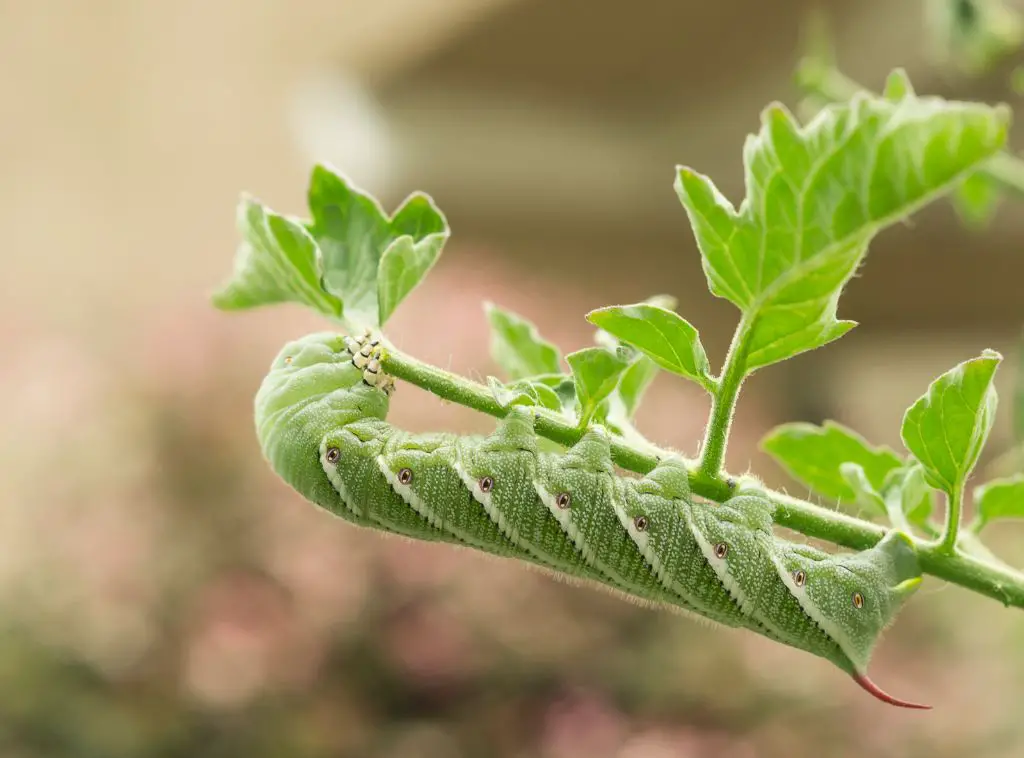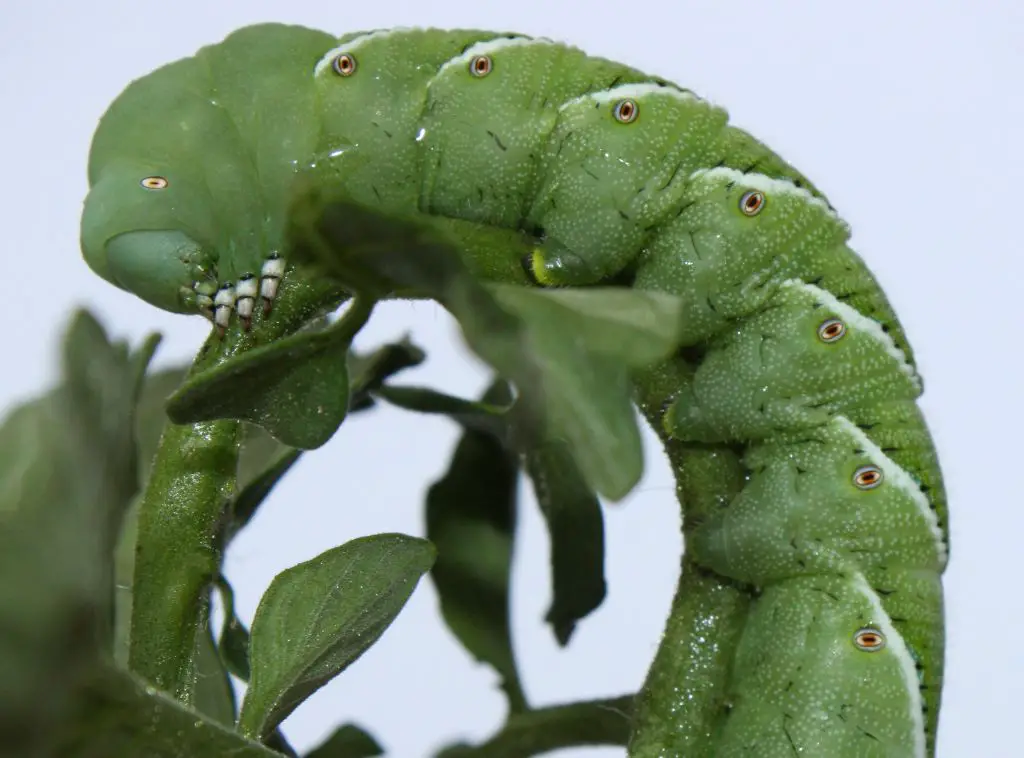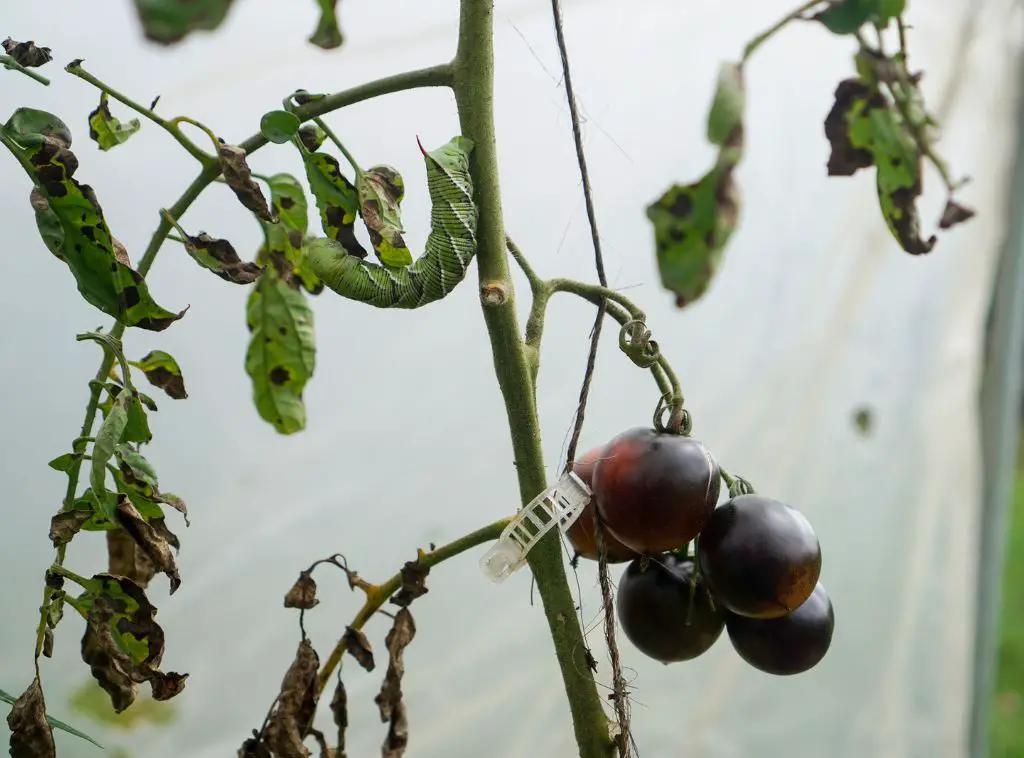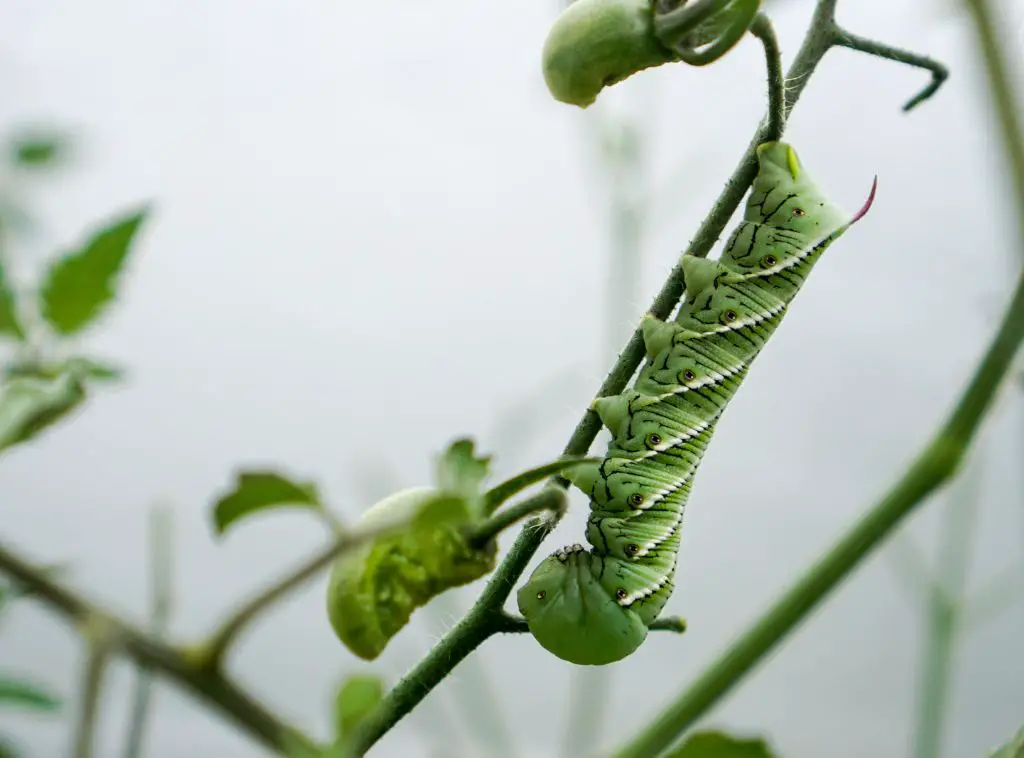Horned tomato worms are a type of insect that can have a significant impact on tomato plants. These large, green caterpillars are known for their distinctive “horns” that protrude from their bodies, and they can quickly defoliate a tomato plant if left unchecked. However, despite their reputation as pests, horned tomato worms play an important role in the ecosystem. They are a food source for a variety of predators, including birds and other insects, and they can also help to pollinate plants. Understanding the life cycle of the horned tomato worm is essential for anyone who wants to grow tomatoes or who is interested in the workings of the natural world. In this blog post, we will take a closer look at the different stages of the horned tomato worm’s life cycle, from the egg stage to the adult stage, and explore some of the ways in which these insects interact with their environment.
Life Cycle of a Horned Tomato Worm
Egg Stage
The life cycle of a horned tomato worm begins with the laying of eggs. Female moths deposit small, round eggs in clusters on the undersides of tomato plant leaves. The eggs are pale yellow in color and are often covered with a sticky substance that helps them to adhere to the leaf surface.
Once laid, the eggs will typically hatch within 4 to 5 days, although the timing can vary depending on environmental conditions such as temperature and humidity. The emerging larvae, or caterpillars, are small and initially feed on the eggshell before moving on to the leaves of the tomato plant.
Important: During the egg stage, it is important to keep a close eye on tomato plants and inspect them regularly for signs of horned tomato worm infestation. Removing any egg clusters that are found can help to reduce the number of larvae that hatch and prevent them from damaging the plants.
Larval Stage
The larval stage of the horned tomato worm is the longest and most active stage of its life cycle. During this stage, the caterpillar will grow rapidly, consuming large quantities of tomato plant leaves and fruit as it goes.
As the larva grows, it will molt several times, shedding its outer skin to reveal a new, larger one underneath. These molts are necessary for the caterpillar to accommodate its increasing size.
Throughout the larval stage, the horned tomato worm will continue to feed voraciously, often causing significant damage to tomato plants. However, it is also during this stage that the distinctive “horns” on the caterpillar’s head will begin to develop, making the insect easier to identify.
Towards the end of the larval stage, the horned tomato worm will begin to prepare for pupation, seeking out a suitable location in which to form a chrysalis. This may involve crawling away from the tomato plant and finding a sheltered spot on the ground or in nearby vegetation.
Pupal Stage
The pupal stage of the horned tomato worm is a critical transitional period in which the caterpillar transforms into an adult moth. At the end of the larval stage, the horned tomato worm will have found a suitable location to pupate and will form a protective cocoon or chrysalis.
Inside the chrysalis, the caterpillar’s body will break down and reorganize into the adult moth form. This process typically takes several weeks to complete, although the timing can vary depending on environmental conditions.
Once the transformation is complete, the adult moth will emerge from the chrysalis and begin its short adult life. The moth is typically gray or brown in color and has a wingspan of around 2 inches. It will spend most of its adult life seeking out a mate and laying eggs on tomato plants or other suitable host plants.
It is important to note that while the adult moth is harmless, the horned tomato worm in its larval stage can cause significant damage to tomato plants. By understanding the life cycle of the horned tomato worm and taking appropriate measures to control infestations, it is possible to minimize the damage caused by these insects and protect your tomato crops.
Developmental Timeline
The horned tomato worm undergoes several distinct stages of development, each with its unique characteristics and behaviors. The following is a general timeline of the developmental stages of the horned tomato worm:
- Egg stage: The female Five-spotted Hawkmoth lays eggs on the undersides of leaves, usually in clusters of 10-30 eggs. The eggs are small and green, and they take about 4-10 days to hatch.
- Larval stage: The newly hatched horned tomato worm is small and pale yellow in color. As it grows, it becomes larger and more robust, reaching a length of up to 4 inches. During this stage, the horned tomato worm feeds voraciously on the leaves and stems of tomato plants, causing significant damage. The larval stage lasts around 2-4 weeks.
- Pupal stage: The horned tomato worm pupates by burrowing into the soil or hiding under debris, where it forms a hard, brown cocoon. Inside the cocoon, the larva transforms into an adult moth over a period of around 2-3 weeks.
- Adult stage: The adult Five-spotted Hawkmoth emerges from the cocoon as a gray or brown moth with a wingspan of around 2 inches. The adult moth lives for several weeks, during which time it mates and lays eggs on suitable host plants.
Importance of Controlling Populations
Controlling horned tomato worm populations is essential to prevent damage to tomato plants and ensure a healthy harvest. While these caterpillars are a natural part of the ecosystem, high populations can lead to significant damage to tomato plants, reducing yields and causing economic losses for farmers.
There are several effective methods for controlling horned tomato worm populations, including:
Handpicking:
Handpicking the caterpillars off tomato plants can be an effective method for small-scale infestations. However, it is time-consuming and labor-intensive, making it impractical for larger-scale operations.
Natural predators:
Encouraging the presence of natural predators such as birds, wasps, and spiders can help control horned tomato worm populations. Birds are particularly effective at reducing populations, as they will consume both the caterpillars and adult moths.
Pesticides:
Chemical pesticides can be effective in controlling horned tomato worm populations. However, they should be used with caution, as they can harm beneficial insects and impact the ecosystem.
Crop rotation:
Rotating tomato plants with non-solanaceous crops can help reduce horned tomato worm populations by disrupting their life cycle.
In addition to these methods, practicing good cultural practices, such as removing plant debris and ensuring adequate irrigation and fertilization, can also help prevent infestations. Overall, controlling horned tomato worm populations is an important part of maintaining healthy tomato plants and ensuring a successful harvest.
Role in the Ecosystem
The Five-spotted Hawkmoth, the adult form of the horned tomato worm, plays an essential role in the ecosystem as a pollinator. These moths are particularly important in pollinating night-blooming flowers, such as evening primrose and tobacco, as well as some daytime blooming flowers.
The adult moth feeds on the nectar of flowers, using its long proboscis to reach deep into the flower for nectar. As it feeds, it picks up pollen on its body, which it then transfers to other flowers as it moves from plant to plant. This pollination process is essential for the reproduction of many plant species, including those that produce fruits, vegetables, and seeds.
In addition to their role as pollinators, the adult moths also serve as a food source for a variety of predators, including birds and bats. By providing food for other animals, the Five-spotted Hawkmoth contributes to the overall health and diversity of the ecosystem.
Important: While the adult moths have a beneficial role in the ecosystem, their larval stage as the horned tomato worm can cause significant damage to tomato plants. Balancing the need to control horned tomato worm populations with the need to preserve the ecosystem’s health is a complex issue that requires careful management and consideration.







Leave a Reply